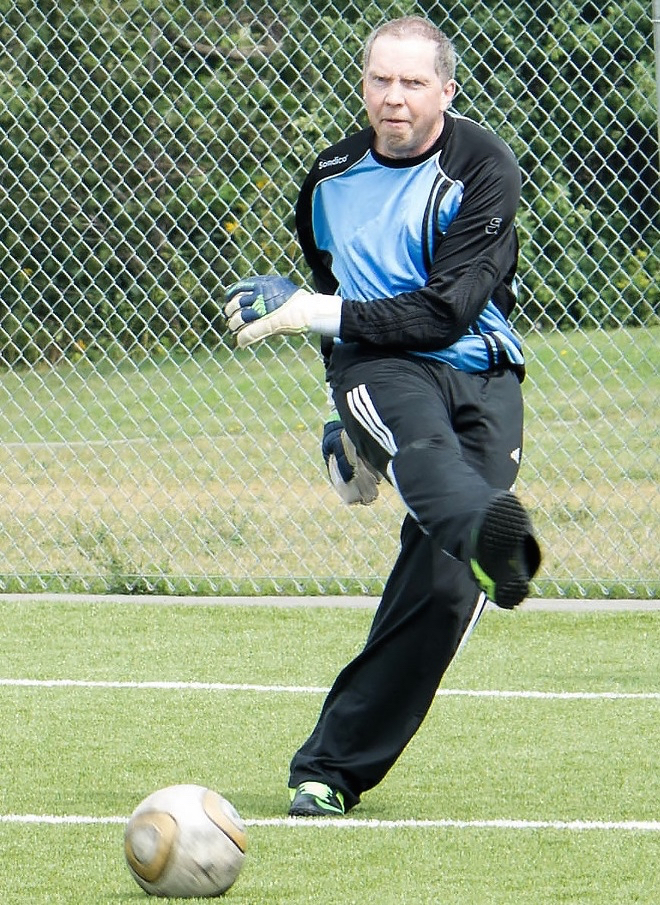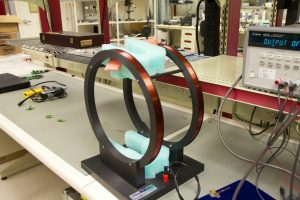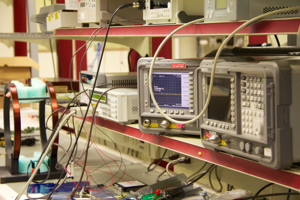It’s like a little secret.
That’s how some of the team at ON Semiconductor’s medical division, based in Waterloo, view the chips they make, which quietly power other companies’ devices.
For other teammates, like Gareth Weale, it’s not so little of a secret; he feels the impact of the company’s work all the time.
Weale, who has Type 1 diabetes, has had to manage his condition for the last three decades. As a result, he sees technology from an entirely different perspective.
Weale wears an infusion pump, a small device that delivers insulin under the skin of his abdomen. A small electrical sensor in his arm closes the loop by sending accurate blood sugar readings to the pump.
This, he says, is a “night and day” difference from jabbing himself with needles of the size typically seen only in horror films, hoping he was administering the right amount of insulin.

Gareth Weale, Product Marketing Manager at
ON Semiconductor. (Courtesy of ON Semiconductor)
This limited the avid soccer fan from playing his beloved sport, but the chip-based system he now uses has allowed Weale back on the field.
The knowledge that ON Semiconductor's technology is changing lives in this way is a “huge motivator” at work, he says.
“I’m pretty incentivized to make high-quality, good-performing parts, because it’s keeping me alive, so they better be good,” he says.
Just like its technology, ON Semiconductor's Waterloo office is a hidden powerhouse within the region’s tech community.
But it hasn’t always been that way.
Senior Scientist Robert Brennan remembers the team’s birth as Dspfactory, a spinoff of local hearing-aid maker Unitron, like it happened yesterday.
“I was hired at Unitron at a time when analog was the dominant technology,” he says, adding that, “things that seem trivial now were very difficult to do back then.”
Unitron spun Dspfactory out in 1998 to solve the analog-to-digital signal processing problem through chip technology. [DSP stands for digital signal processing.]
Prior to that, Unitron had been devoting a lot of resources to trying to develop the chip internally, but it was proving to be a rather expensive quest.
The little startup of six people, including Brennan, set out to find answers and funding. He was used to being part of a small group, with only three other people on his research team at Unitron.
“No one really understood what we were doing in Unitron,” he says. “They didn’t really see the utility of doing digital signal processing, because at the time we were selling analog products and making lots of money on it.”
The Dspfactory team found itself facing a complex problem without the safety net of a big company.
“Our first chip didn’t work,” he says.
Investors were beginning to lose faith in the startup’s ability to deliver, but Dspfactory had enough of a product to demonstrate that they were on the right track and convinced investors to continue to back them.
“We knew exactly what didn’t work and we knew what paths to take,” he says, adding that “it takes money to get there; people need to get paid or they leave.”
From there, Dspfactory went on to successfully create its first digital chip, the Delta-2, in 2000. The chip powered the Toccata system, which is the digital piece for hearing aids that Stork was looking for years earlier.
For startups, the medical industry can be challenging. The go-to-market and sales cycles are a lot slower, because of strict compliance and regulations, as well as the sometimes-uphill battle of selling to big companies.
“We couldn’t grow fast enough, [and] we didn’t have the money to keep developing new technology,” Brennan says. “It takes a long time to get customers. We weren’t able to ramp up quickly enough to make that happen, and that’s how the acquisition came.”
U.S.-based AMIS Holdings, better known as AMI Semiconductor, acquired Dspfactory for US$42 million in September 2004.
“They wanted a similar thing to what Unitron wanted,” Brennan says. “They saw our expertise and they realized they needed it as part of their company.”
AMIS, a publicly traded company based in Idaho, left the 72-member Dspfactory team as its own separate unit, but there were unexpected changes.
“When we were Dspfactory, we were very much ‘who’s the customer, what do they want, what are the cycles of the market,’ ” says David Coode, who started as a Dspfactory co-op student and is now a product and marketing manager for ON Semiconductor’s medical division.
“Becoming part of a public company, quarterly finances started to matter a lot more and it was a big shift,” he says. “Making the numbers on a quarterly basis was overlaid on top of everything, which is something that we didn’t have at all as a startup.”

Magnetic field generator, used to test communication
between chips and an end-application like
hearing aids. (Communitech Photo: Trish Crompton)
On the other hand, the acquisition opened up possibilities for applications beyond hearing aids.
In early 2008, Phoenix-based ON Semiconductor acquired AMIS for US$915 million.
It was a strategic move for ON Semiconductor to gain market share, and the former Dspfactory team was along for the ride.
ON Semiconductor, like AMIS, saw the potential to expand into unknown fields.
“We’re pretty free to innovate,” Brennan says.
However, as in their days at Unitron and AMIS, the team faced the challenge of convincing the rest of the company of their value.
“We’re kind of like bonds; they can invest in their stocks and have a rapid rise, but they will always have a rapid fall,” Brennan says. “We’re going to be there during the recessions.”.

Testing equipment in ON Semiconductor’s
Waterloo Lab. (Communitech photo: Trish Crompton)
As with the previous acquisition, the medical team faced new possibilities for its core competencies: sensing and low-powered measurements.
In today’s market, where the Internet of Things is all the rage, ON Semiconductor’s medical division is poised to lead the charge on health. Its chips and technology are embedded in clinical, medical, wearable and health devices.
“I think we were onto it before it became popular; we just understood that it was necessary to be connected,” Brennan says.
That understanding came naturally to a team skilled at building smaller devices to power larger ones.
“What Gareth was talking about with insulin pumps, that’s just a bunch of numbers,” he says, referring to the data that flows from the sensor in Weale’s arm to the computer device on his hip. Connecting that computer to a database, however, could lead to improvements in the sensor’s readings and overall patient experience.
Connected devices, in turn, mean new opportunities for ON Semiconductor and its 40 employees on Kumpf drive.
“We’re starting to get into different fields, like processing large data,” Brennan says, adding that data is a byproduct of IoT and a growing trend.
After 17 years, the team that began as Dspfactory is still pursuing challenges in the industry and solutions for patients.
“I think it makes a difference,” Brennan says. “You’re making a medical device, something that’s going to change lives; it’s going to make it better.”
The team is happy to have remained in Waterloo through the acquisitions and the evolution of the region into one of the world’s top startup ecosystems.
“There’s so much more activity that has come out of RIM shedding capital and talent in town, and having an organization like Communitech that helps put them together in an ecosystem,” Coode says.
With the increase in startup activity, competition for talent has increased, but ON Semiconductor’s life-changing technology – unseen as it might be – sets it apart, Brennan says.
“We make a difference,” he says, “and I think that’s our key.”

